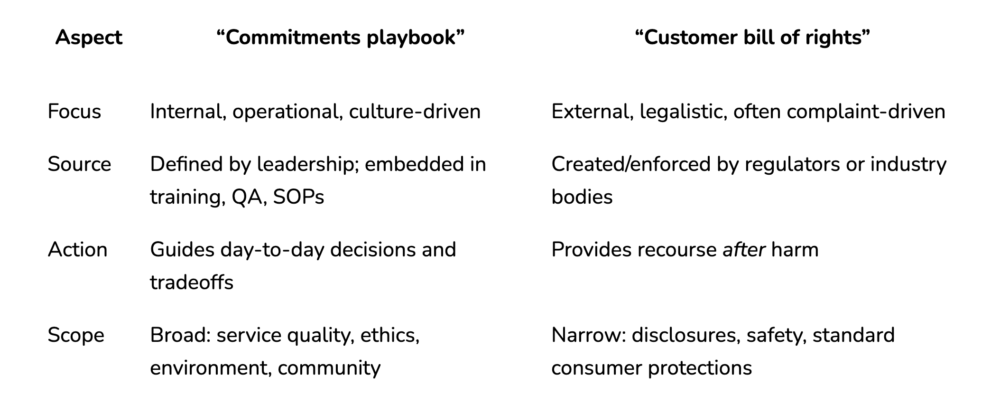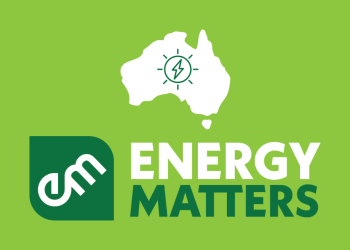By Scott Nguyen, CEO and co-founder of Bodhi
Summary: Residential solar doesn’t need a new “customer bill of rights.” It needs company-level promises that are embraced, measured and operationalized. A commitments playbook that starts with your company’s promise to customers and includes clear actions for your team and targeted outcomes can easily outperform rights-based mandates.
I recently heard about a Jane Goodall anecdote where she was asked her perspective on the Great Ape Project which was advocating for a set of rights for the primates. She responded, “I don’t like to talk about animal rights. I prefer to talk about human responsibilities.”
Her response was simple, but it prompted me to consider what a similar paradigm could do for the solar industry. Instead of focusing on a “customer’s bill of rights,” should we define the fundamental promises we, as an industry or as individual companies, commit to our customers, particularly if we aspire to be truly customer-centric?
In light of recent headlines about deceptive solar sales and the reactive rules that followed, the answer should be a resounding “yes.” States have moved to protect consumers with rights-first measures like California’s required Solar Consumer Protection Guide, Rhode Island’s Homeowners Bill of Rights for residential solar, New York’s standardized community-solar disclosure forms under UBP-DERS and Texas’s new Residential Solar Retailer law adding licensing, disclosures and penalties.
If we got into this business for the joy of bringing solar to our community, then we should articulate and consistently deliver upon the responsibilities that we have to our customers.
This is where a commitments or “promise to our customers” playbook comes in. It serves as the operational blueprint for a customer-first company: it clarifies responsibilities, educates teams on their fulfillment and measures performance to ensure these promises are consistently realized in daily operations.
Why commitments beat a “bill of rights”
A bill of rights is valuable as a safety net, but it’s reactive by design and will always be a step behind. Commitments or promises are proactive: They prevent problems, reduce cancellations and build trust before a complaint exists. In several states, consumer-protection guides and disclosures already function as a regulatory “bill of rights.” Companies that go further by defining and operationalizing their own commitments control the experience, not just their compliance.

5-promise template: Your company’s promise to customers
Below are five promises you can adopt, brand, publish and, most importantly, operationalize across sales, operations and service.
1) We are transparent
Homeowners don’t fear solar — they fear surprises: mystery adders, lower than promised production and financing terms that come to light after signing. Radical transparency lowers anxiety, speeds decisions and slashes cancellations because buyers understand exactly what they’re getting. It also differentiates you from the “no more electric bill” pitches that collapse under scrutiny.
How to show this to customers: Present a line-item proposal (equipment, labor, permitting, overhead). Include a solar production range with a “assumptions & factors” explainer. Record a 90-second screen-share walking through of your numbers for customers to reference. Provide a side-by-side finance view (cash vs. loan vs. PPA) with total cost of ownership and prepayment impact. Add a plain-English “What will my bill look like?” section, helping them visualize the tangible benefits of solar.
Talk track: “We won’t promise a zero electric bill. Here’s the expected range, our assumptions and how your bill changes summer vs. winter.”
Customer anecdote: Cedar Park, March 2025. The Perrys brought in a competitor’s quote claiming “no electric bill.” We pulled 12 months of Oncor interval data, modeled shade from their live oak and showed a $15-$57 residual bill range with the exact TOU windows highlighted. Their first bill was $41, down from $340 the previous year though not zero. In their review they wrote, “They showed their math, and it matched.”
2) We are experts
Customers can’t judge conduit bends or code citations, but they feel expertise through fewer change orders, first-pass inspections and faster PTO. Competitors that rely on seasonal sales blitzes and third-party installs struggle here; you win by proving your team knows the code, the tariff and the AHJ quirks before a single panel goes up.
How to show this to customers: List role-based certifications (NABCEP, OSHA, OEM trainings) next to the people who will touch their project. Add a “How we prevent rework” panel to proposals with your first-pass inspection rate, average days to PTO and change-order rate. Include a redacted permit-packet checklist so they see your rigor. Bring a city/AHJ cheat sheet that proves local experience.
Talk track: “Every designer follows a 23-point NEC/AHJ checklist. That’s how we hit first-pass inspections and why your PTO arrives sooner.”
Customer anecdote: Leander, August 2024. The Alvarezes had a neighbor who failed two inspections for a system installed by a competing installer. That delayed PTO by two extra months. We assured them of our expertise and delivered as promised. The system passed inspection the 1st time and PTO came nine days under PEC’s neighborhood average. “Not magic, just code-literate people,” Mr. Alvarez said.
3) We communicate
Silence, not delays, is what triggers cancellations and one-star reviews. A visible cadence (what’s happening, who owns it, when you’ll update next) keeps trust high even when utilities or AHJs move slowly. It distinguishes you from shops that only call when they need a signature or a payment.
How to show this to customers: Hand a “Communication Cadence” card promising updates every X number of business days during active phases and outlining escalation SLAs. Give a live tracker link (or portal) with timestamps, next steps and ETA. Set a quiet-timer guarantee — if they don’t hear from you by the cadence date, they get an automatic update that day. Send a Thursday digest: what changed, what’s next, what you’re waiting on. Use one shared inbox (e.g., projects@) so threads never dead-end. Document warm handoffs (sales → PM → service) with “owner + next step + ETA.”
Talk track: “If you ever have to ask ‘What’s going on?’ we’ve failed. You’ll hear from us every Thursday whether something moved or not.”
Customer anecdote: San Antonio, January 2025. CPS Energy hit a PTO backlog. We posted Friday notes with the actual interconnection ticket ID and last activity to our customers’ portal, then texted a same-day summary. The Chen family gave us a 5-star review: “Even when nothing moved, we knew why and what was next.”
4) We are your solar company
Homeowners shouldn’t have to juggle messages from the permit office, lender or inverter monitoring company or wonder which message matters. You run point across all of them. Position those parties as important cogs in the process, while making it crystal-clear that you are their solar company and the single accountable owner. That framing lowers stress, speeds decisions (because customers know who to ask) and prevents the “pinball effect” that tanks satisfaction.
How to show this to customers: Introduce a “Your Team” card with names, photos and direct contact options. Give a simple “Who’s Who in Your Project” card: Us (your solar company) → your main contact; City/County Permit Office → inspections; Lender → financing docs; Inverter App → performance view. Use one shared inbox so threads never dead-end. Document warm handoffs (sales → PM → service) with “owner + next step + ETA.” When a third party creates confusion, run a quick three-way call and post a plain-English summary in the portal the same day.
Talk track: “You’ll hear from other parties — permit office, lender, inverter app — because they each play a role. We’re your solar company, and we run point. If something pops up from any of them, send it our way. We’ll explain what it means and handle the next step.”
Customer anecdote: Pflugerville, March 2025. Ms. Carter’s net-meter request bounced because the inverter serial in the packet didn’t match the sticker. Our PM, Maria, got the corrected OEM doc, resubmitted to Bluebonnet Electric and posted a two-paragraph summary in the portal. Rejection-to-approval: five business days. Ms. Carter’s line: “I had one person to text and, everything got unstuck.”
5) We stand behind our work
Most buyers are really purchasing peace of mind. Publishing clear warranties, production guarantees (if offered) and service SLAs and then meeting them turns installs into referrals. Competitors say “we’ll take care of you”; you prove it with speed, clarity and receipts.
How to show this to customers: Deliver a closeout kit with serials, warranty PDFs, monitoring access and a 12-month health-check already on the calendar. Give a fridge-friendly “If X happens, do Y” card (no data, breaker trip, roof leak). Show last quarter’s average service time-to-close. Publish a small “Make-It-Right” pledge (e.g., discretionary budget for post-install nuisances like paint touch-ups or conduit caps) and state it up front.
Talk track: “If something fails, here’s how you reach us, what we do in 24 hours and how long fixes typically take. Last quarter, we averaged 4.1 days.”
Customer anecdote: Georgetown, July 2025. A microinverter flat-lined during a heatwave. The Morales family opened a ticket from their phone; we verified the failure, filed the RMA that day and swapped the unit two days after the part arrived. We closed with a 20-second video of the commissioning screen. Their review: “They didn’t just install it, they owned it when it failed.”
A customer bill of rights is a useful safety net in that it lays out protections after something goes wrong. But if the past few years have taught our industry anything, it’s that paper promises aren’t enough. Homeowners don’t stay loyal because some agency or organization publishes a bill of rights; they stay loyal because your team prevents the problems that would force them to use those rights in the first place.
What the industry needs is for more companies to adopt a commitments playbook — clear, operational promises that every installer can demonstrate on Day 1 and prove on Day 100: radical transparency, real expertise, predictable communication, one accountable owner and standing behind the work. When these commitments are trained, measured and visible to the homeowner, you don’t just comply — you differentiate.
















